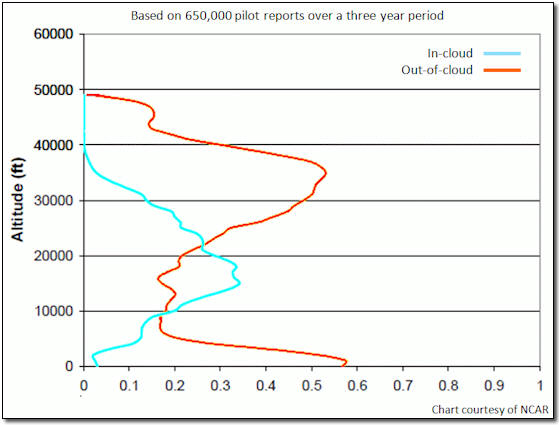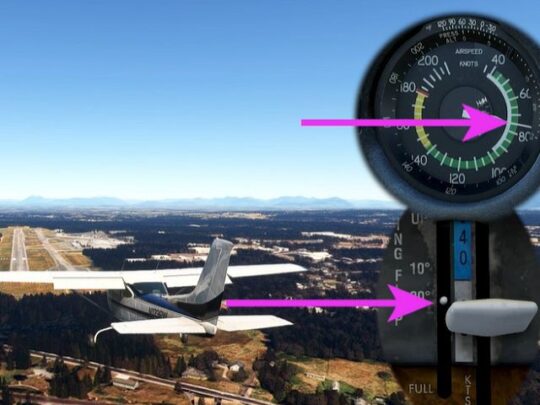Subscriber question:
"What altitude yields the smoothest ride on average?" - Dave G.
Scott:
“You are unlikely to hear any pilot complain when the air is glassy smooth. So, is there an altitude that yields the smoothest ride, on average? Of course, on any particular day, there’s no easy answer; any altitude could create a smooth or rough ride. Some turbulence is highly predictable and others not so predictable, but the best approach is to remain outside of most clouds. So, it is very useful to qualify turbulence as in-cloud or out-of-cloud.
This chart from a study done by turbulence researchers at the National Center for Atmospheric Research (NCAR) shows the altitudes where moderate or greater (MOG) turbulence was reported in relation to being in or outside of clouds.

The red line represents those turbulence reports that were deemed to be in clear air or outside of the cloud boundary. And the cyan line represents turbulence reports that were identified as in-cloud. So it is easy to see that turbulence out-of-cloud is most frequent at upper and lower levels of the atmosphere while mid-level turbulence is often in-cloud.
Most of the out-of-cloud reports near the surface are likely due to mechanical turbulence or thermal turbulence. The out-of-cloud turbulence at higher altitudes is in clear air due to the effects of the jet stream. The mid-level turbulence is likely due to flight through cumuliform clouds not associated with deep, moist convection or thunderstorms.
So what’s the best altitude to minimize your exposure to moderate or greater turbulence? Well, considering both in-cloud and out-of-cloud turbulence, flight between 8,000 and 12,000 feet will allow for the smoothest ride, on average.”

